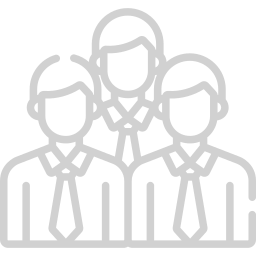Evaluating your O2C Automation Journey: Is it time for a service?
- The path to increasing efficiency in Accounts Receivables
- Insights on how best to judge your O2C investment success
- Utilising automation to drive the best from your teams
Executive Summary
Financial processes are an integral part of an organisation. They touch every aspect and generate huge amounts of data, with the potential to identify performance issues, predict future scenarios and change business outcomes. According to SAP insider, more than 60% of companies would be using cloud based services by 2022, and there is a 3.8% expected increase in spending for cloud services in 2021 itself.
With new technology being unveiled each day, and the continuously evolving economy, how do you know if your existing O2C solution is delivering sufficiently high rates of automation to unlock this potential? Are you leveraging the necessary data and knowledge to make a significant impact on business decisions and performance? An MIT survey reported that 50% executives found that the pandemic exposed strategic weaknesses within their organisation, how would you deal with such an issue? Keeping up with trends is the key to survival and digital transformation is the best way to fill those gaps.
End-to-end automation in the O2C cycle is key to improving business performance, but knowing exactly which financial processes to automate, and which technologies are most suitable, are vital parts to understanding whether you are delivering value.
There are lots of vendors that claim to deliver full, end-to-end automation. But look at it from the customer point of view and what you find is that many organisations end up implementing siloed, disparate process automation that delivers efficiency gains but little or no scalability.
Trying to integrate multiple technologies which are not designed to work together – often thrown together through legacy acquisitions is also a common challenge for finance teams. This lack of integration limits the extent that customer service, sales, and A/R can collaborate to positively impact the customer experience.
Remember Why you Started the Journey
A Boston Consulting Group report found that 80% of executives plan to accelerate their digital transformation in 2021.
Digital Order-to-Cash will be the new normal as leaders are investing in tools to curb the pandemic impact on A/R. Evaluating your digital transformation goals, KPI’s and revisiting internal processes regularly are the first steps to assessing how far you have come on your automation journey.
The next step is ensuring you have a truly integrated order and cash management solution which provides full visibility of the entire O2C process so KPIs can be modified, and new processes can be easily added and optimised to impact business performance.
If some of these processes are still manual, lengthy, and error-prone, you may not be recognising the
true value of end-to-end automation, even though this was promised to you by the vendor.
If you are investing the time and resources to move to a new ERP system, simultaneously investing in cloud ensures that you are optimising your processes to the best possible standard.
Reducing operational expenses and cutting down on unnecessary costs goes a long way in ensuring survivability in the market. According to The Guardian, the UK lost over £251 billion due to the Covid-19 lockdown.
Thus exploring digital transformation projects for finance has become the go-to for firms today, with 53% executives planning to drive cost reduction projects in their businesses according to an MIT survey. Lowering operational and time costs is essential when boosting productivity and revamping processes.
“The UK lost over £251B due to COVID”
Re-examine the Dashboard
Are you able to quickly access supplier records and customer information with your current solution? Is decision-making easy given the data you are presented with?
Many organisations claiming full automation still struggle to manage multiple invoices in their ERP tool which causes huge challenges when disputes are raised, or multiple currencies exist. Often customer information is also stored in multiple locations, making response times slow and risking a decrease in customer satisfaction.
Leveraging a single platform to automate financial processes and manage the entire order to cash cycle quickly increases productivity, enhances cash flow, and makes it easier for clients to do business with you.
The pillars of success for the best dashboard include providing analysts with end to end visibility, giving them the ability to proactively make data driven decisions while simultaneously allowing for reallocation of resources to higher value tasks. Insightful dashboards keep you up to date with crucial metrics that help make accurate decisions and give you the ability to quickly change course if needed.
Increase the Efficiency of your Engine
Most O2C vendors claim to have AI, but if you look beneath the surface, few are leveraging this engine to drive business improvement and client satisfaction across the organisation.
Similar to environmental factors now influencing our car purchasing decisions, the pandemic has dramatically changed the way people buy and do business. Organisations must adapt to these changing needs or simply face being left behind.
By leveraging AI to increase efficiency, finance teams can predict the likelihood of disputes, payment delays and provide integration with customer and carrier websites.
Deduction validity scores can be easily generated, and agile organisations can leverage data to quickly react to changing customer buyer behaviour and the introduction of new technologies.
Factors to Consider when Evaluating your O2C Investment
Investing in in new technology can be incredibly daunting task but hopefully with a few of these guidelines you could make a more informed decision catering to your needs and experience:
Customer Service
Are we providing the best quality customer service – how long does it take to respond to a query?
Are we able to maximize offerings for individual customer needs?
Automation
Do we offer automated invoicing for faster, more accurate processing of payments?
Late Payments
Can we predict disputes and late payments before they even arise?
Onboarding
How quickly do we onboard new suppliers or even new employees?
Operational
Are we running any operational improvement programs?
Optimise
How are we managing data to optimise the customer experience in Finance and other areas of the business?
User Experience
Are we ensuring an optimum user experience (for both user and/or customer)?
Ask yourself and stakeholders, is the system efficient? For example, can you use the fewest clicks to generate a promised payment?
Access your purchase
Automation is the key to crushing complexity. Tools that consistently deliver high automation rates can improve a credit and collections team’s productivity by over 40%, enabling teams to focus on other high-value items that impact decision making and improve business performance.
If you are not seeing this level of benefit from your existing system then it is time to re-evaluate your existing system. Carry out an ROI assessment with your provider to assess the true value automation could bring to your organisation.
Examples of how Companies Reached the Chequered Flag
Dr Pepper Snapple Group achieved 80% A/R process automation by incorporating continuous improvement
Benefits Dr Pepper Snapple Group achieved:
1. $2.5M reduction in annual finance service costs through automation
2. 40% improvement in collector productivity
3. 50% reallocation of FTEs to other processes
Starbucks achieved 72% zero-touch
Using cash application automation, Starbucks reaped rich rewards by automating 72% of their line items and processing 77% of their payments, automatically.
“Cash application automation helped us achieve our targets of scaling accounts receivable operations to meet the business growth. Using this technology, we successfully faced the operational challenges related to the labor intensive, manual process of capturing customer remittance details, the absence of remittance and multiple accounts for each customer.
With automation applied across the entire cash application process, we have seen an improvement in team productivity and efficiency.”
– Director, Customer Financial Service
Uber use HighRadius to achieve 14-day reduction in DSO and 93% deductions auto-linked to sales invoices
“Uber, used an artificial intelligenceenabled autonomous platform to help them reduce DSO by 14 days and achieve 92% item level hit rate.
With intelligent automation introduced into their system, Uber jumped from 0% to 99% automation in their operations and optimised their results.”
– Global Process Owner Billing, Credit and Collections
Sanofi rolled out Global Cash Application in 28 countries during their Transformation Journey.
50% workload elimination with automation.
With the solution in place, Sanofi achieved great results, leveraging 85% automation in Their Russian Branch from 0%, and going from 0% to 60% in Hungary.
They also improved on existing automation practices, boosting their French branch from 50% to 88%.
1. 48% Total payments managed through ecash
2. 50% Workload elimination with automation
3. 1.5yr Solution was implemented globally







